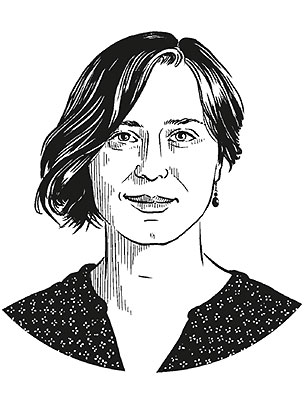People and animals
Text: Karen N. Gerig
Friederike Zenker is investigating how images influence our relationships with animals, how they change our thinking and actions with regard to animal ethics. She also takes a personal interest in the role images play in the fight for animal rights.
Since September 2016, Friederike Zenker has been doing research into unique animals for the “Singuläre Tiere in den Blick nehmen” project at Switzerland’s eikones National Center of Competence in Research. Based on current approaches in animal philosophy, she takes an analytical look at photos and videos to understand their significance. The emphasis is on the role of these images in animal ethics: What function might they have? Is the animal-ethics debate gaining impetus from emotions stirred by images of intensive animal farming, for instance? What contributions are visual culture and film theory making?
It is not surprising that someone who thinks these issues through in such detail should be personally committed to respect for animals and abstain from eating meat. Zenker has avoided any kind of animal products for more than a decade and has wondered about the deeper reasons behind her vegan lifestyle for some time. She first took an interest in animal ethics while studying philosophy at Freiburg im Breisgau and Glasgow. “I wanted to understand better a cultural and social change that I am part of,” she says.
By raising questions about the humane treatment of animals, animal ethics aims to encourage people to see animals as individuals. The debate about these issues has elements in common with the history of other emancipatory movements. For instance, Aristotle regarded women as incapable of rational thought and moral virtue and put them on a par with animals – a view that prevailed even into the 19th century. It was the women’s movement that finally prompted a change in attitudes.
Animals, however, are not able to stand up for their own rights. While an activist agenda is not Zenker’s motivation, there is a political dimension to her research: “I want to help sharpen people’s perception and awareness, especially in light of the ongoing debate about the criteria that should guide our private and public treatment of animals.” In a first step, existing patterns of perception need to be analyzed in terms of how we view animals and what informs our views.
How we conceive of animals is partly a result of our encounters with real images. “That’s why I’m interested in animal depictions in the form of photos and videos,” says Zenker. Not every photo or video lends itself to analysis, however, and she is currently concentrating on documentary and staged images. “So that rules out Bambi and Nemo,” she jokes, before adding, “Of course, the presence of animal images on social media fascinates me, too. Even though they’re not directly relevant to my work, it’s certainly intriguing how those images shape our perceptions.”
So is there room after all for research on the cute cat GIFs that fill our Facebook feeds? “We don’t always immediately realize that this portrayal of animals isn’t fair to them. People categorize animals in ways that can be problematic,” says Zenker. She explains that we see some animals as companions while objectifying or ignoring others, often without rational justification and without thinking about how we impact them. “Images can perpetuate such perceptions, but they also have the potential to make us question them.”
She goes on to add: “I’m aware how vast this field of research is. Behind each door I open there are others waiting to be opened. I may have to close a few instead.” The reason is not only that there are innumerable species of animal, there are also masses of photos and videos that are all worth analyzing. Zenker explains that she is at an early stage of the project and is dealing with theoretical aspects, for instance defining what exactly it means to see an animal as an individual rather than a mere object or symbol.
More articles in the current issue of UNI NOVA.

